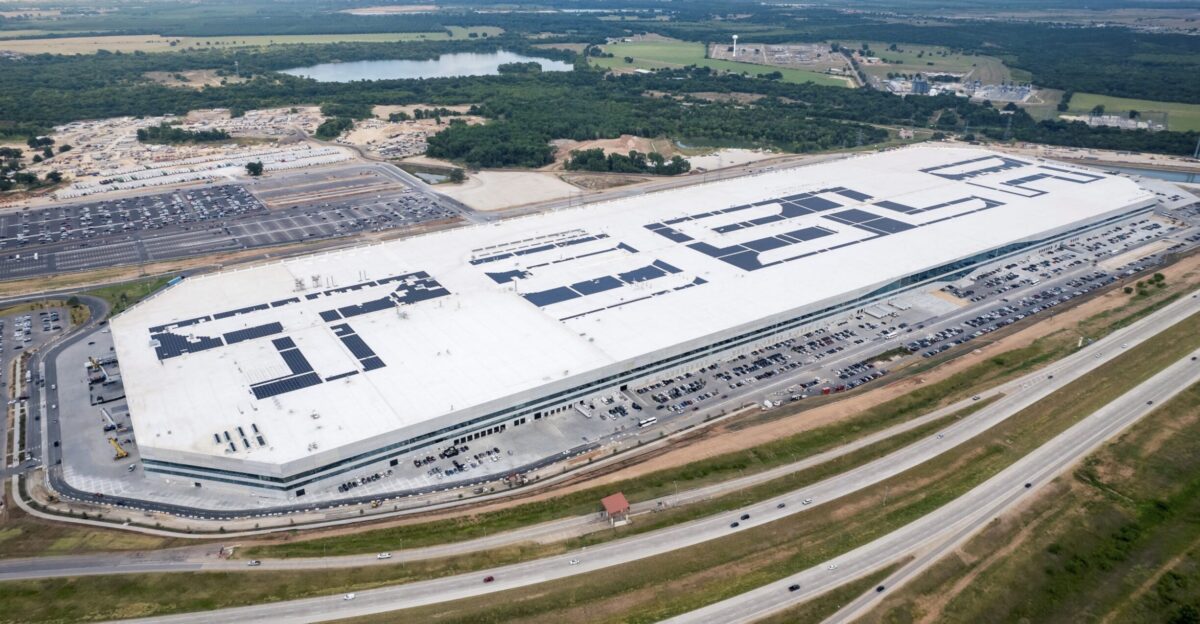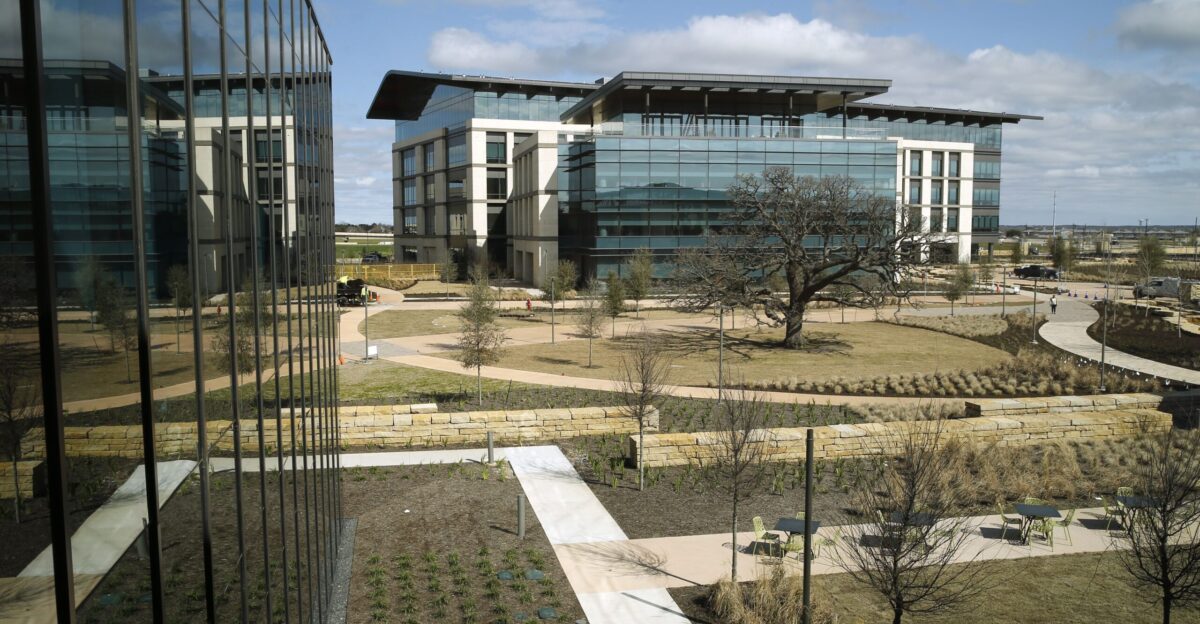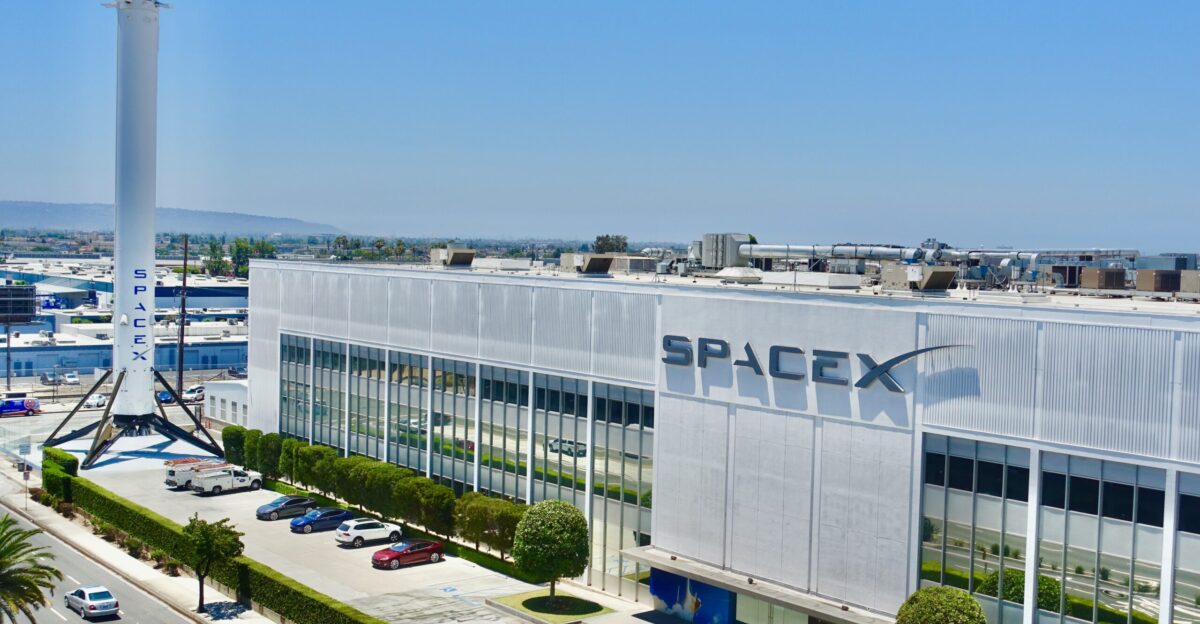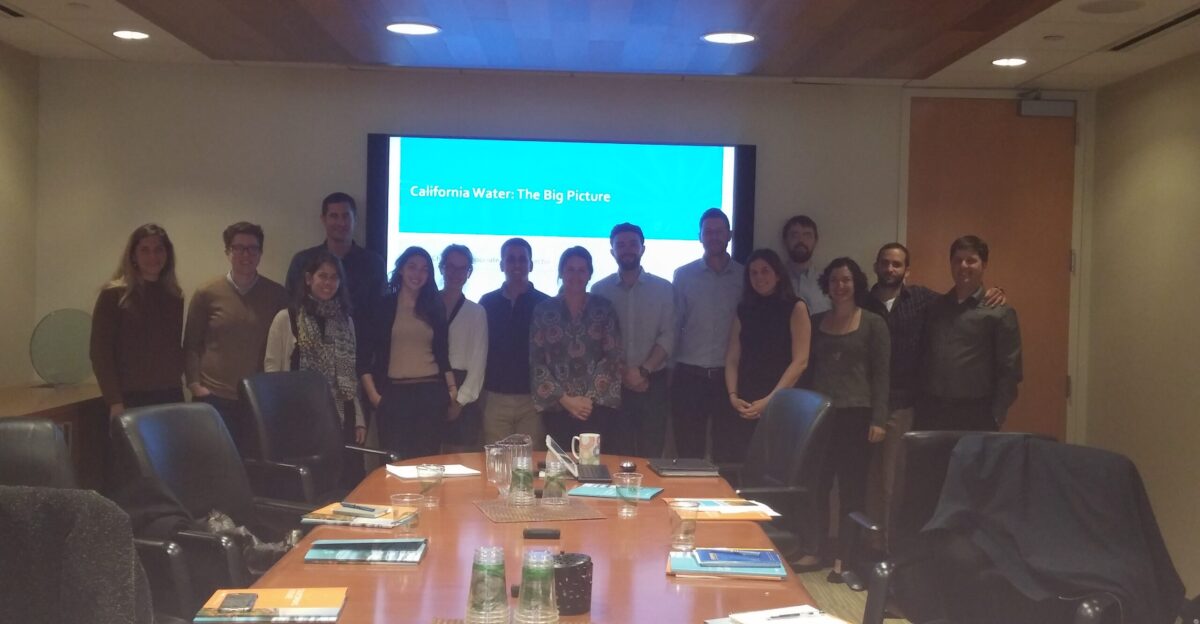
California’s economic dominance faces tough challenges as a steady stream of high-profile departures—from corporate headquarters to skilled workers—reshapes its economic landscape. The Golden State’s $4 trillion economy remains powerful, but cracks are showing. Companies that once symbolized California’s innovation and opportunity now cite high taxes, regulatory burdens, and soaring living costs as reasons to leave.
Every exit chips away at the state’s economic backbone, threatening growth and its very identity. Let’s take a closer look at eleven of the most costly departures and how their decisions are reshaping the future of the Golden State.
1. Chevron’s Farewell After 146 Years

When Chevron announced in August 2024 that it would relocate its headquarters to Houston, it marked the end of a 146-year California legacy. The energy giant projected annual savings of $201 million by 2029, attributing the move to restrictive regulations and steep operating costs.
Beyond the 2,000 employees affected, Chevron’s exit carried heavy symbolism, sparking debate over whether California’s regulatory climate is chasing away its most established employers. The decision also signals a broader energy industry shift toward states with looser oversight, leaving California with a visible gap in its corporate roster and an even bigger question about its economic priorities.
2. Tesla’s Bay Area Breakaway

Tesla’s 2021 move of its corporate base to Austin wasn’t just about a new geography; it was about escaping the Bay Area’s space constraints and skyrocketing housing costs. By 2022, Tesla still employed 47,000 Californians, but Elon Musk clarified that the company couldn’t scale effectively under local conditions. High infrastructure demands, slow permitting, and limited expansion options had stalled growth.
Tesla’s relocation reminds us that even cutting-edge innovators can outgrow the environment that birthed them. It also sets a precedent for other tech firms to reconsider whether California’s prestige can outweigh its practical hurdles in a fiercely competitive global market.
3. Oracle’s Quiet Silicon Valley Exit

When Oracle shifted its headquarters to Texas, it wasn’t with fanfare but with calculation. Founded in Silicon Valley, Oracle had been part of California’s tech DNA for decades. But high taxes, regulatory hurdles, and escalating operational costs tipped the scales. The move took hundreds of high-paying jobs and shifted decision-making power out of the state.
The loss goes beyond employment; it weakens the collaborative tech ecosystem that thrives on proximity between big players. Oracle’s departure underlines a growing reality that no company is too entrenched to leave if the financial and regulatory incentives point elsewhere.
4. Charles Schwab’s Financial Flight

Charles Schwab’s decision to move its headquarters from San Francisco to Westlake, Texas, was more than a cost-saving maneuver. Proximity to a growing client base and a friendlier regulatory environment outweighed California’s prestige. The shift disrupted hundreds of jobs and removed a major tax contributor from the Bay Area.
For a state heavily reliant on high-income earners and corporate taxes, losing a financial powerhouse like Schwab isn’t just an economic hit; it’s a warning that even service-based giants are willing to trade California’s brand appeal for stability and growth elsewhere.
5. Hewlett-Packard Enterprise’s Sun Belt Shift

A stark contrast in tax burdens and business costs drove Hewlett Packard Enterprise’s relocation to Texas. While HPE maintains a footprint in California, moving the headquarters meant shifting high-value jobs, corporate investments, and top-tier talent out of Silicon Valley.
Losing a founding tech pioneer was a symbolic blow for an industry long celebrated as the heartbeat of California’s innovation economy. It also raises a more profound concern that as more tech leaders leave, the state’s once-unchallenged dominance in technology risks being diluted by emerging hubs in the Sun Belt and beyond.
6. CBRE’s Commercial Real Estate Retreat

CBRE, the world’s largest commercial real estate services firm, officially moved its headquarters from Los Angeles to Dallas in 2020, with the full strategic shift confirmed by 2025. This isn’t just another corporate relocation; it’s a structural hit to California’s commercial property market. CBRE’s exit comes as more than 209 companies have moved to Texas since 2018, illustrating how real estate development trends follow broader corporate migration patterns.
Losing CBRE’s decision-making center affects investment flows, market analytics, and client relationships, leaving California with fewer tools to compete for large-scale commercial projects in an increasingly mobile economy.
7. McKesson’s Healthcare Departure

McKesson’s move out of the Bay Area took with it not just one of the largest pharmaceutical distributors in the nation, but also a strategic nerve center for healthcare logistics. The company cited operational constraints and high costs as driving factors.
This departure disrupts supply chain efficiencies and affects local vendors, while removing a significant source of tax revenue. In a state where healthcare is a primary economic driver, losing McKesson is a double hit—financially and strategically—weakening California’s influence in an industry that touches nearly every resident’s life.
8. Palantir’s Rocky Mountain Relocation

Palantir Technologies’ 2020 move from Palo Alto to Denver marked a symbolic break from Silicon Valley’s grip on big data and AI. Co-founder Joe Lonsdale cited California’s tax and regulatory policies as central to the decision. Hundreds of high-paying tech jobs shifted out of state, reducing California’s role in shaping one of the fastest-growing sectors in the global economy.
Palantir’s exit isn’t just about where people work; it’s about where groundbreaking ideas are developed, funded, and deployed, and California’s loss is Colorado’s gain in this critical technology race.
9. AECOM’s Infrastructure Exit

When AECOM, a global leader in engineering and infrastructure, moved its headquarters from Los Angeles to Dallas, it took with it substantial payroll and control over billion-dollar projects. California lost jobs and influence over where and how major infrastructure is developed.
With infrastructure spending increasingly competitive nationwide, AECOM’s departure weakens California’s ability to attract and retain large-scale projects that could shape the state’s transportation, energy, and environmental future for decades.
10. FICO’s Credit Analytics Migration

FICO’s decision to shift primary operations eastward highlights the challenges facing data-driven financial companies in California’s high-cost environment. Known globally for its credit scoring system, FICO had been a critical link between California’s tech expertise and the financial services sector.
Its move breaks that connection, removing a specialized talent pool and the collaborative opportunities it fostered. As financial analytics become more central to banking and credit markets, FICO’s absence leaves a gap that could be difficult for California to fill, especially if other niche tech-finance firms follow suit.
11. SpaceX’s Partial Liftoff from California

SpaceX still has significant operations in California, but recently, it has shifted some headquarters activities to Texas to streamline expansion and sidestep regulatory hurdles. Elon Musk has framed the move as a practical choice, as launching rockets is one thing, but navigating California’s permitting process is another.
While SpaceX’s Hawthorne facility remains a key manufacturing site, decision-making and growth strategies are increasingly centered outside the state. This gradual shift erodes California’s role in aerospace innovation, a once-dominant sector, and raises concerns that even the most future-focused industries may see better lift-off conditions elsewhere.
California’s Population Drain: A Talent Gap in the Making

Between 2022 and 2023, almost 700,000 Californians made the tough choice to leave, and it wasn’t just a statistic; it was tech engineers packing up laptops, nurses saying goodbye after late shifts, and teachers walking out of classrooms they helped build. High housing costs squeeze even those with steady paychecks; as USC demographer Dowell Myers explains, “The primary reason for the exodus is the state’s high housing costs, but other reasons include long commutes and crowded urban centers”.
The wave of departures tightens the local labor market, leaving businesses scrambling to fill roles and to make staying worthwhile. According to labor experts at the Stanford Institute for Economic Policy Research, “California’s population decline has concentrated losses among skilled workers, shrinking consumer demand, and contracting the vital tax base”.
Mass Deportations and a $275 Billion Threat

In 2025, California faces a looming threat as federal immigration crackdowns put the economy at risk. Economists like Abby Raisz warn that mass deportations could “cost California up to $275 billion” since immigrants fill critical jobs in agriculture and hospitality. UC Davis economist Giovanni Peri notes, “Immigrant workers are the backbone of the economy.” Their absence would trigger labor shortages, slow food production, and slash $23 billion from state and local tax coffers.
Lieutenant Governor Kounalakis stresses that “nearly one-third of Californians are immigrants,” highlighting how deeply they power everything from local businesses to schools. As business owner Lupe Lopez describes, community fear already affects neighborhoods and local economies.
A Tax Base Under Pressure

California’s tax structure targets high earners and profitable companies, with a top state income tax rate of 13.3%—the steepest in the United States. It’s a fact that executives like Palantir co-founder Joe Lonsdale have publicly weighed when deciding to relocate, telling the Los Angeles Times, “I could either put that money toward things that are fixing the world, or give it to the California state government,” referencing how steep taxes influenced his move.
Institutions like the Public Policy Institute of California warn that as corporate departures rise, so does the risk of budget shortfalls, directly threatening public schools, infrastructure, and healthcare funding. Lieutenant Governor Kounalakis and other leaders stress it’s a fiscal balancing act of keeping vital services afloat while making sure California doesn’t lose the very innovators and businesses that help pay for them
The Innovation Network at Risk

California’s dominance in technology and research has always relied on a dense network effect of leaders, startups, investors, and universities clustered together, sharing ideas. But each corporate departure weakens that network.
While the state still leads in AI patents and Fortune 500 headquarters, losing giants like Hewlett Packard Enterprise and Palantir means fewer opportunities for collaboration and mentorship. Over time, this can slow startup formation and dull California’s edge in emerging industries. Texas, Colorado, and North Carolina competitors are already positioned to catch the next wave of innovation talent.
The Commercial Real Estate Shockwave

Corporate relocations in California aren’t just about jobs lost; they leave behind empty office towers and stall development projects, changing entire city blocks. The state has seen an estimated 3.7% drop in headquarters employment, which amounts to roughly 77,600 jobs since 2010. Economist Sarah Bohn of the Public Policy Institute of California reports, “When headquarters leave, high-pressure executive roles and top R&D teams typically go too, leaving the rest behind.”
This dynamic is most visible in markets like San Francisco and Los Angeles, where local service businesses and restaurants see fewer customers and cities collect less property tax as vacancies grow.
Real estate analyst Michael Soto says, “The exodus of major employers floods the commercial real estate market with empty floors and rents fall, competition for tenants intensifies, and developers put projects on ice”. Even when companies keep regional offices, the loss of their head offices can amplify local economic divides, making the aftershocks felt well beyond the skyscrapers
National and Global Ripples

California’s corporate and population losses don’t happen in isolation; they reshape the economic map. Texas and Florida have been the biggest beneficiaries, gaining jobs, investment capital, and prestige from the influx. Globally, industries from manufacturing to renewable energy may see California’s influence wane as projects and headquarters move elsewhere.
Even foreign investors are adjusting, directing more funds to emerging U.S. business hubs. The changes force a question … can California adapt quickly enough to hold onto its role as a global trendsetter, or will other regions seize the momentum?
The Human Toll Behind the Headlines

Corporate relocation announcements often focus on savings and strategy, but for workers and communities, the story is personal. Families face sudden cross-country moves or job loss. Local businesses lose reliable clients. Cities that once counted on stable employers now grapple with rising vacancies and reduced tax income.
Civic leaders warn that the ripple effects will deepen inequality without policies addressing business competitiveness and livability. The numbers tell one story, but the human cost tells another, one measured in disrupted lives and frayed community ties.
California’s Crossroads Moment

The departures of 2025 confront California with a stark choice: adapt swiftly or face a slow economic unraveling. The path forward demands bold action, addressing the housing crisis, cutting regulatory red tape, and overhauling tax policies to reclaim California’s competitive edge. History shows the Golden State is no stranger to reinvention. It has weathered recessions, survived tech collapses, and evolved through seismic political shifts.
Can California reinvent itself fast enough to remain the world’s premier magnet for talent, innovation, and opportunity? Or will it become a cautionary tale about the high cost of complacency in a rapidly changing economic landscape? The future of the Golden State hinges on the answers it chooses to pursue now.